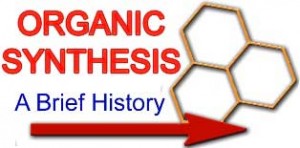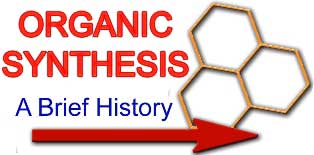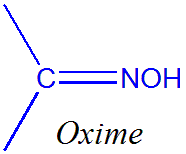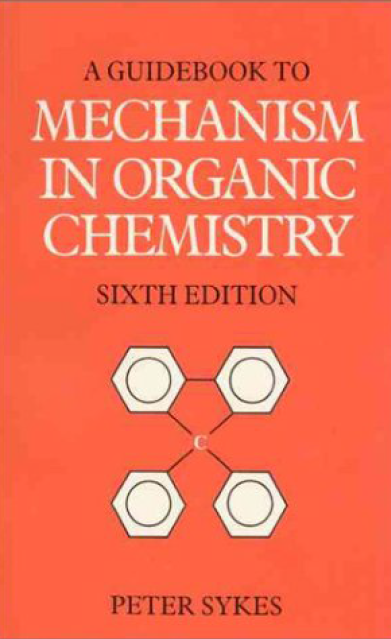Introduction
 At the dawn of the twenty-first century, the state of the art and science of organic synthesis is as healthy and vigorous is as ever. The birth of this exhilarating, multifaceted, and boundless science is marked by Wohler’s synthesis of urea in 1828. This milestone event – as trivial as it may seem by today’s standards – contributed to a “demystification of nature” and illuminated the entrance to a path which subsequently led to great heights and countless rich dividends for humankind. Being both a precise science and a fine art, this discipline has been driven by the constant flow of beautiful molecular architectures from nature and serves as the engine that drives the more general field of organic synthesis forward. Organic synthesis is considered, to a large extent, to be responsible for some of the most exciting and important discoveries of the 20th century in chemistry, biology, and medicine, and continues to fuel the drug discovery and development process with myriad processes and compound for new biomedical breakthroughs and applications. In this assignment, I will chronicle the past, evaluate the present, and project to the future of the art and science of organic synthesis. The gradual sharpening of this tool is demonstrated by considering its history along the lines of pre-World War II, the Woodward and Corey eras, and the 1990s, and by accounting major accomplishments along the way. Today, natural product total synthesis is associated with prudent and tasteful selection of challenging and preferably biologically important target molecules; the discovery and invention of new synthetic strategies and technologies; and explorations in chemical biology through molecular design and mechanistic studies. Future strides in the field are likely to be aided by advances in the isolation and characterization of novel molecular targets from nature, the availability of new reagents and synthetic methods, and information and automation technologies. Such advances are destined to bring the power of organic synthesis closer to, or even beyond, the boundaries defined by nature, which, at present, and despite our many advantages, still look so far away.
At the dawn of the twenty-first century, the state of the art and science of organic synthesis is as healthy and vigorous is as ever. The birth of this exhilarating, multifaceted, and boundless science is marked by Wohler’s synthesis of urea in 1828. This milestone event – as trivial as it may seem by today’s standards – contributed to a “demystification of nature” and illuminated the entrance to a path which subsequently led to great heights and countless rich dividends for humankind. Being both a precise science and a fine art, this discipline has been driven by the constant flow of beautiful molecular architectures from nature and serves as the engine that drives the more general field of organic synthesis forward. Organic synthesis is considered, to a large extent, to be responsible for some of the most exciting and important discoveries of the 20th century in chemistry, biology, and medicine, and continues to fuel the drug discovery and development process with myriad processes and compound for new biomedical breakthroughs and applications. In this assignment, I will chronicle the past, evaluate the present, and project to the future of the art and science of organic synthesis. The gradual sharpening of this tool is demonstrated by considering its history along the lines of pre-World War II, the Woodward and Corey eras, and the 1990s, and by accounting major accomplishments along the way. Today, natural product total synthesis is associated with prudent and tasteful selection of challenging and preferably biologically important target molecules; the discovery and invention of new synthetic strategies and technologies; and explorations in chemical biology through molecular design and mechanistic studies. Future strides in the field are likely to be aided by advances in the isolation and characterization of novel molecular targets from nature, the availability of new reagents and synthetic methods, and information and automation technologies. Such advances are destined to bring the power of organic synthesis closer to, or even beyond, the boundaries defined by nature, which, at present, and despite our many advantages, still look so far away.
In old days, the chemistry of natural product and its organic synthesis attracted a very lively interest. New substances, more or less complicated, more or less useful, were constantly discovered and investigated. For the determination of the structure, the architecture of the molecule, we have today very powerful tools, often borrowed from Physical Chemistry. The organic chemists of year 1900 would have been greatly amazed if they had heard of the methods now at hand. However, one cannot say the work is easier; the steadily improving methods make it possible to attack more and more difficult problems and the ability of Nature to build up complicated substances has, as it seems, no limits.
In the course of the investigation of a complicated substance, the investigator is sooner or later confronted by the problem of synthesis, of the preparation of the substance by chemical methods. He can have various motives. Perhaps he wants to check the correctness of the structure he has found. Perhaps he wants to improve our knowledge of the reactions and the chemical properties of the molecule. If the substance is of practical importance, he may hope that the synthetic compound will be less expensive or more easily accessible than the natural product. It can also be desirable to modify some details in the molecular structure. An antibiotic substance of medical importance is often first isolated from a microorganism, perhaps a mould or a germ. There ought to exist a number of related compound with similar effect; they may be more or less potent; some may perhaps have undesirable secondary effects. It is by no means, or even probable, the compound produced by the microorganism – most likely as a weapon in the struggle for existence – is the very best from the medicinal point of view. If it is possible to synthesize the compound, it will also be possible to modify the details of the structure and to find the most effective remedies.
Birth of Organic Synthesis
The birth of organic synthesis occurred in the 19th century. The first conscious organic synthesis of a natural product was that of urea in 1828 by Wohler [1]. Significantly, this event also marks the beginning of organic synthesis and the first instance in which an inorganic substance (NH4CNO: Ammonium cyanate) was converted into an organic substance. The synthesis of acetic acid from elemental carbon by Kolbe in 1845[2] is the second major achievement in the history of organic synthesis. It is historically significant that, in his 1845 publication, Kolbe used the word “Synthesis” for the first time to describe the process of assembling a chemical compound from other substances. The organic synthesis of alizarin (1869) by Graebe and Liebermann [3] and indigo dye (1878) by Baeyer [4] spurred the legendary German dye and represent landmark accomplishments in the field. But perhaps, after urea, the most spectacular total organic synthesis of the 19th century was that of (+)-glucose by E.Fischer [5]. This total synthesis is remarkable not only for the complexity of the target, which included, for the first time, stereochemical elements, but also for the considerable stereochemical control that accompanied it. With its oxygen-containing monocyclic structure (pyranose) and five stereogenic centers (four controllable), glucose represented the state-of-the-art in terms of target molecules at the end of the 19th century. E.Fischer became the second winner of the Nobel Prize for chemistry (1902), after J.H. van’t Hoff (1901) [6].
Timeline of Organic Synthesis in 19th Century
- 1828 → Wohler synthesized urea from ammonium cyanate. [1]
- 1833 → Thomas Graham produced crystalloids and colloids and also introduced chemists to existence of polybasic acids [7].
- 1833 → Henri Braconnot nitrates starch, making crude nitrocellulose [8].
- 1838 → Theophile Pelouze nitrates paper, making crude nitrocellulose [8].
- 1845 → Christian Friedrich Schonbein used cotton’s apron of his wife on spilt mixture of nitric acid and sulphuric acid. The moping cloth when dried over stove, went poof! And was gone. He discovered synthesis of nitrocellulose from cotton [8].
- 1846 → Ascania Sobrero discovered nitroglycerin, a shattering explosive [8].
- 1851 → Hoffmann elimination was published, a method to eliminate nitrogen from alkyl chain [8].
- 1856 → William Henry Perkin synthesized the very first synthetic dye [8]. He, in outrageous manner, treated aniline with potassium dichro
 mate and was about to discard the resulting mess as just another failure when his eye caught a purplish glint in the material. He added alcohol, which dissolved something out of the mess and turned a beautiful purple. It was termed as ‘Aniline Purple’, which is chemically knows as Mauveine.
mate and was about to discard the resulting mess as just another failure when his eye caught a purplish glint in the material. He added alcohol, which dissolved something out of the mess and turned a beautiful purple. It was termed as ‘Aniline Purple’, which is chemically knows as Mauveine. - 1963 → J. Wilbrand synthesized Trinitrotoluene (TNT) which was originally used as a yellow dye but its destructive power was well-recognized in 1902 [8].
- 1865 → Kekule realized the structure of benzene [8].
- 1866 → Alfred Nobel invents dynamite using nitroglycerin and kieselguhr [8].
- 1867 → Baeyer synthesized indigo, a synthetic dye.
- 1868 → Baeyer’s student, Karl Graebe synthesized alizarin, an important natural dye.
- 1869 → First synthetic plastic ‘Celluloid’ was formed by John Wesley Hyatt [8].
- 1875 → Alfred Nobel invents blasting gel by mixing nitrocellulose in nitroglycerin [8].
- 1890 → E.Fischer synthesized (+)-Glucose [5].
- 1891 → Bernhad Tollens invents Pentaerythritol tetranitrate (PETN) [8].
- 1899 → Henning synthesized cyclotrimethylenetrinitramine (Cyclonite or RDX) [8].
Organic Synthesis in 20th century
The 20th century has been an age of enormous scientific advancement and technological progress. To be sure, we now stand at the highest point of human accomplishment in science and technology, and the 21st century promises to be even more revealing and rewarding. Advances in medicine, computer science, communication, and transportation have dramatically changed the way we live and the way we interact with world around us. An enormous amount of wealth has been created and opportunities for new enterprises abound. It is clear that at the heart of this technological revolution has been science, and one cannot deny that basic research has provided the foundation for this to occur.
Chemistry has played a central and decisive role in shaping the 20th century. Oil, for example, has reached its potential only after chemistry allowed it analysis, fractionation, and transformation into myriad of useful products such as kerosene and other fuels. Synthetic organic chemistry is perhaps the most expressive branch of the science of chemistry in view of its creative power and unlimited scope. To appreciate its impact on modern humanity one only has to look around and recognize that his science is a pillar behind pharmaceuticals, high-tech materials, polymers, fertilizers, pesticides, cosmetics, and clothing. The engine that drives forward and sharpens our ability to create such molecules through chemical synthesis (from which can pick and choose the most appropriate for each application) is total synthesis. In its question to construct the most complex and challenging of nature’s products, this endeavor – perhaps more than any other – becomes the prime driving force for the advancement of the art and science of organic synthesis. Thus, its value as a research discipline extends beyond providing a test for the state-of-the-art. Its offers the opportunity to discover and invent new science in chemistry and related disciplines, as well as to train, in a most rigorous way, young practitioners whose expertise may feed many peripheral areas of science & technology [6].
Timeline of Organic Synthesis in 20th Century [11]
- 1906 → Mikhail Tsvet discovers chromatography [9].
- 1907 → Emil Fischer artificially synthesized peptide amino acid chains.
- 1908 → Sulfanilamide, a synthetic sulfonamide with antibacterial properties, was synthesized by Paul Gelmo [10].
- 1909 → Baekeland synthesized a copolymer using phenol and formaldehyde, termed as Bakelite later.
- 1909 → Arsphenamine, a synthetic compound was used by Paul Ehrlich in treating syphilis.
- 1920 → Tsvett technique was reintroduced by Richard Kuhn.
- 1924 → George Eastman synthesized cellulose acetate.
- 1925 → Robert Robinson discovered the structure of morphine, an alkaloid.
- 1928 → Alexander Fleming accidentally discovered penicillin.
- 1930 → Paul Karrer worked out the structure of the carotenoids, an important class of plant pigments.
- 1932 → Gerhard Domagk discovered the antibacterial properties of sulfanilamide. Charles Goodyear synthesized neoprene, a synthetic rubber, now called as elastomers.
- 1933 → Tadeus Reichstein artificially synthesized vitamin C; the first vitamin synthesis.
- 1937 → Dorothy Crowfoot Hodgkin discovered the 3D structure of cholesterol.
- 1940-1950 → Alexander Robertus Todd synthesized nucleotides, the building block of nucleic acids. Acher John Porter Martin and Richard Laurence Millington Synge developed new type of chromatography called paper chromatography. Frederick Sanger tackled Insulin by breaking it down and separating through paper chromatography. William von Eggers Doering synthesized quinine in 1944. Penicillin was prepared on industrial scale in 1945. Robert Robinson discovered the structure of strychnine.
- 1950-1960 → Woodward synthesized cholesterol and cortisone in 1951, reserpine in 1956 and chlorophyll in 1960. Vincent du Vigneaud synthesized oxytocin in 1954. Semi-synthetic penicillins were synthesized in 1958. Myoglobin structure was determined in 1960 by using x-ray diffraction technique.
- 1962 → Woodward synthesized a complex compound related to achromycin, a well known antibiotic.
- 1972 → Albert Eschenmoser and Robert Woodward synthesized Vitamin B12.
References
- F. Wohler, Ann. Phys. Chem. 1828, 12, 253.
- H.Kolbe, Ann. Chem. Pharm. 1845, 54, 145.
- C. Graebe, C. Liebermann, Ber. Dtsch. Chem. Ges. 1869, 2, 332; and First commercial synthesis: C. Graebe, C. Liebermann, H. Caro, Ber. Dtsch. Chem. Ges. 1870, 3, 359; W.H.Perkin, J. Chem Soc. 1970, 133-134.
- A. Baeyer, Ber. Dtsch. Chem. Ges. 1878, 11, 1296-1297; first commercial production: K. Heumann, Ber. Dtsch. Chem. Ges. 1890, 23, 3431.
- E. Fischer, Ber. Dtsch. Chem. Ges. 1890, 23, 799-805.
- See brochure of Nobel Committees for Physics & Chemistry, The Royal Swedish Academy of Sciences, List of Nobel Prize Laureates 1901-1994, Almquist & Wiksell Tryckeri, Uppsala, Sweden, 1995.
- Graham, Thomas (1833). “Researches on the Arseniates, Phosphates, and Modifications of Phosphoric Acid”. Philosophical Transactions (The Alembic club) 123: 253–284. doi:10.1098/rstl.1833.0015.
- Oxford Dictionary of Chemistry, 5th edition, Oxford University Press, UK (2004).
- Mikhail Tswett (1906) “Adsorptionanalyse und chromatographische Methode. Anwendung auf die Chemie des Chlorophylls” (Adsorption analysis and chromatographic method. Application to the chemistry of chlorophyll.), Berichte der Deutschen botanischen Gesellschaft, vol. 24, pp. 384–393.
- Paul Gelmo (May 14, 1908) “Über Sulfamide der p-Amidobenzolsulfonsäure,” Journal für Praktische Chemie, 77 : 369-382.
- http://en.wikipedia.org/wiki/Timeline_of_biology_and_organic_chemistry, date accessed 02-01-2014
P.S: READ PART 2 of ORGANIC SYNTHESIS: A BRIEF HISTORY by SYEDA SADIA KHATOON


